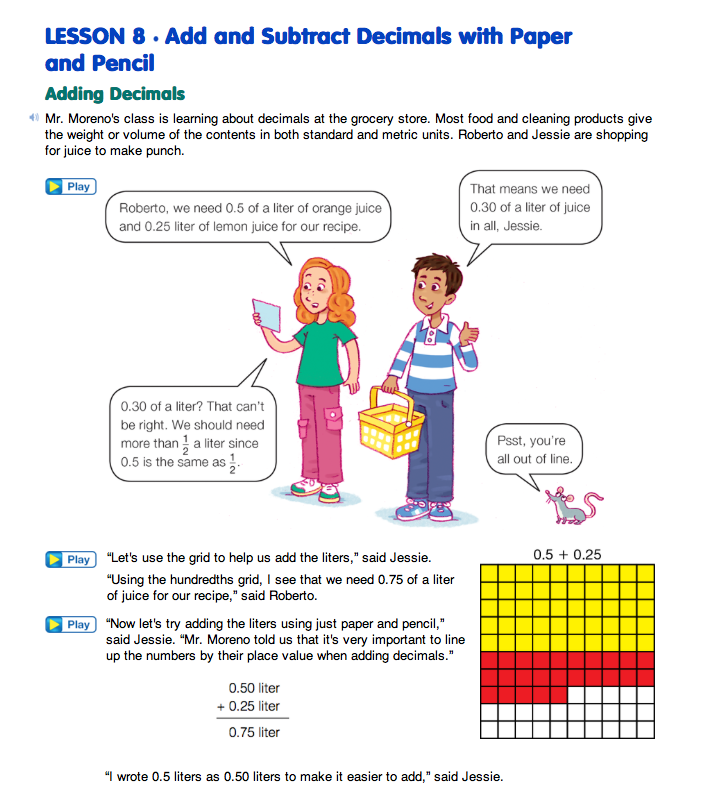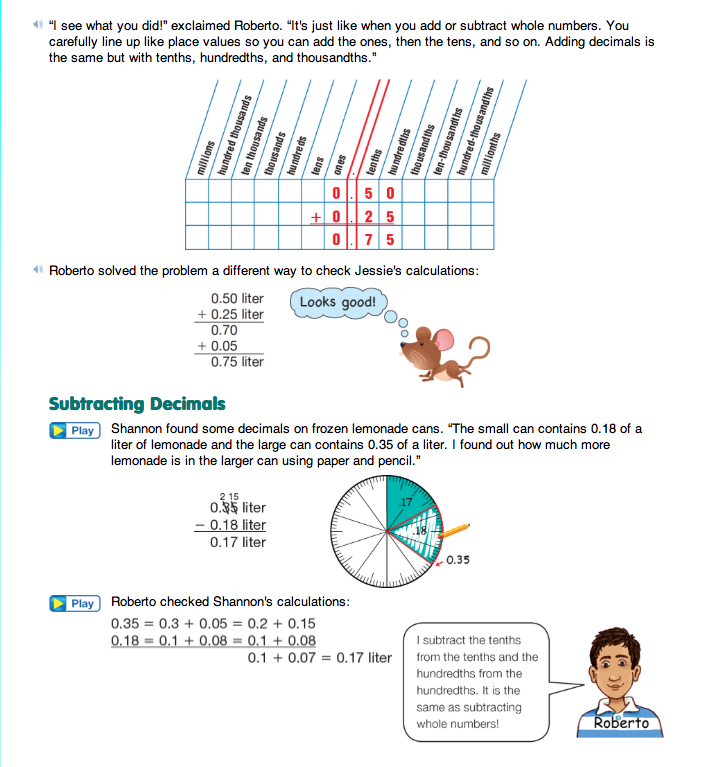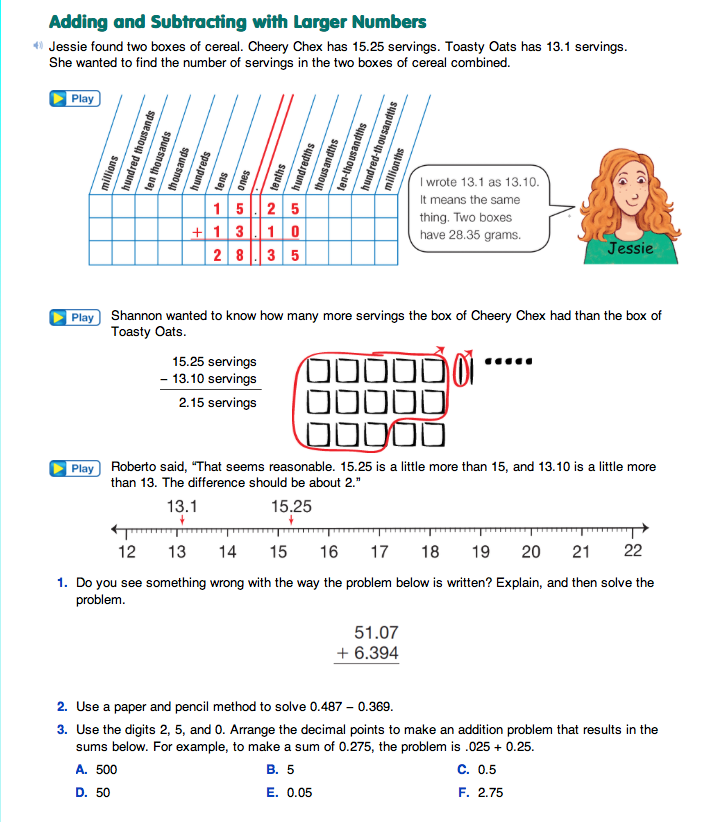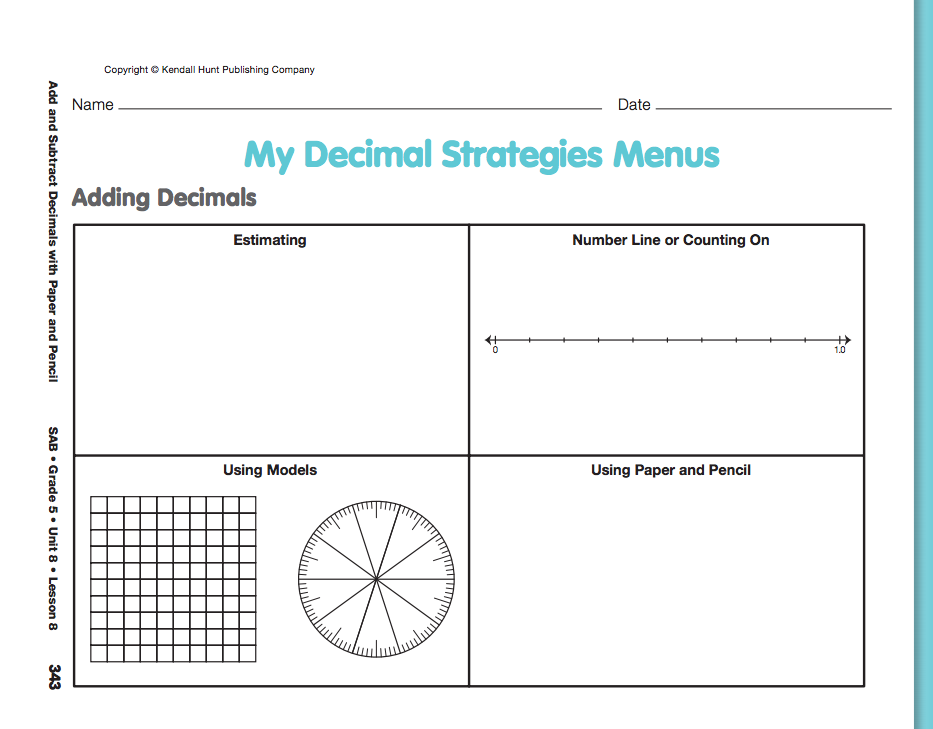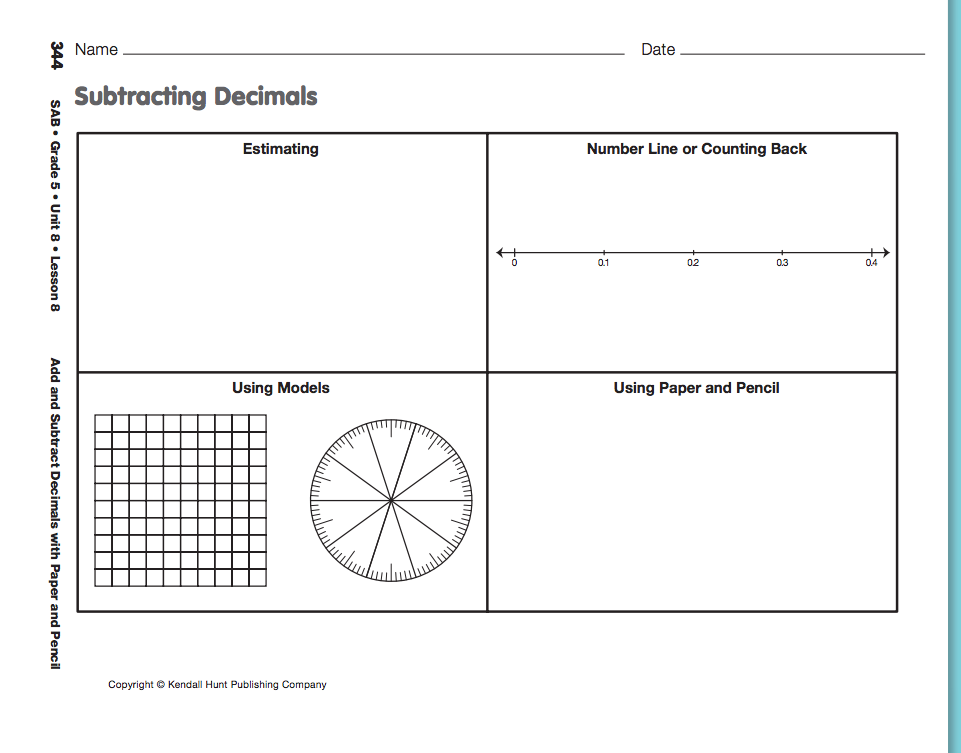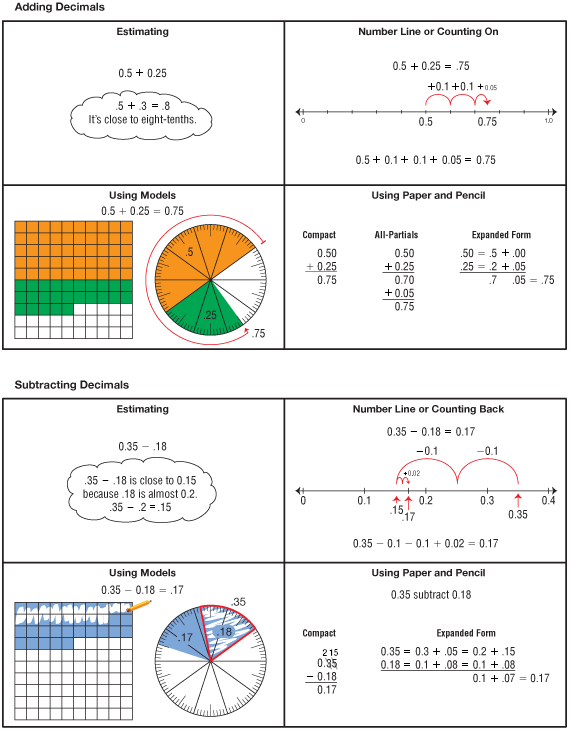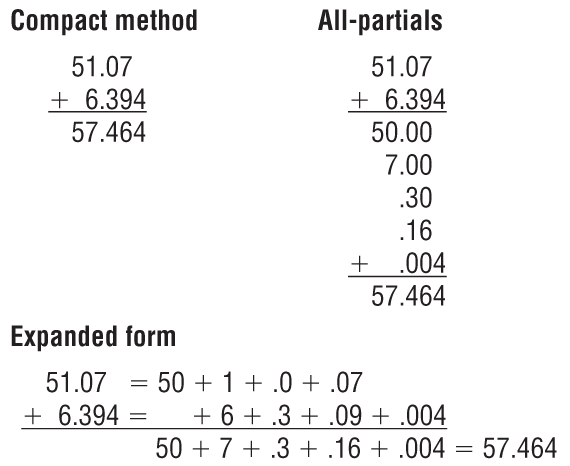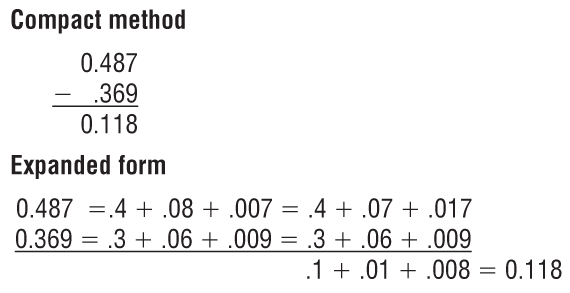Add and Subtract Decimals with Paper and Pencil
Est. Class Sessions: 2–3Developing the Lesson
Part 1: Adding and Subtracting Decimals with Paper and Pencil
Create Strategies Menus. Understanding place value is crucial to proficiency with adding and subtracting decimals. Students must understand that they can do these operations correctly only when like places are aligned. Display the following addition problem vertically, carefully aligning the decimal points:
0.5
+ 0.25
Ask:
Encourage students to use base-ten pieces, Hundredths Circle Wheels, number lines, and hundredths grids. Have copies of the Decimal Number Lines, Decimal Grids, and Hundredths Circles Masters readily available for students to use. Students might also think about the decimals in terms of fractions ( 1/2 liter + 1/4 liter is 3/4 liter) or money (50¢ + 25¢ = 75¢ or 0.75).
After students have had time to solve the problem, select several volunteers and use displays of the Decimal Number Lines, Decimal Grids, and Hundredths Circles Masters to present a variety of solution strategies.
Direct students to the Adding Decimals section of the My Decimal Strategies Menus pages in the Student Activity Book. Tell students that they will create their own strategy menu. They will work with a partner to add examples to the addition menu for solving 0.5 + 0.25. Students will complete the Estimating, Number Line or Counting On, and Using Models sections of the menu, saving the Using Paper and Pencil section for later. Upon completion, have several student volunteers display and discuss the examples they added to their menus.
Next display the following subtraction problem:
0.35
− 0.18
Ask:
After students have had time to solve the problem, select several volunteers to present a variety of solution strategies including those that use models such as base-ten pieces, hundredths circles, Hundredths Circle Wheels, number lines, and hundredths grids.
Direct students to the Subtracting Decimals section of the My Decimal Strategies Menus pages in the Student Activity Book. Students will work with a partner to add examples to the subtraction menu for solving 0.35–0.18, again completing all but the Using Paper and Pencil section of the menu. Upon completion, have several student volunteers display and discuss the examples they added to their menus.
Ask:
Introduce Paper-and-Pencil Methods. Ask students to temporarily put their strategies menus aside and direct them to the Add and Subtract Decimals with Paper and Pencil pages in the Student Guide. Read the vignette describing Mr. Moreno's class at the grocery store to introduce paper-and-pencil addition and subtraction methods aloud. The vignette reinforces the idea of aligning like places and regrouping across the decimal. It also reinforces estimation as a means to verify the reasonableness of a solution.
After reading about how Jessie and Roberto solve 0.5 + 0.25 in the Adding Decimals section, ask:
Continue reading the vignette in the Subtracting Decimals section. Shannon and Roberto solve 0.35 − 0.18. Discuss how the students regroup across the decimal.
Ask:
Remind students that the ten-to-one relationship extends to include numbers that are less than one. Places to the right of the decimal point have the same ten-to-one relationship: tenths, hundredths, thousandths, and so on.
Read the Adding and Subtracting with Larger Numbers section and discuss how the addition and subtraction of decimals is the same as addition and subtraction of whole numbers, no matter how large the whole number is. The key is to align like place values.
Complete Strategies Menus. Students can now complete the Using Paper and Pencil sections of both the addition and subtraction menus on the My Decimal Strategies Menus pages in the Student Activity Book. See Figure 1 for completed sample strategies menus.
Assign Questions 1–3 on the Add and Subtract Decimals with Paper and Pencil pages in the Student Guide to student pairs. Upon completion, discuss the necessity of aligning like places and decimal points when adding or subtracting decimals (Question 1). Have students demonstrate ways to solve the problem using paper and pencil. Do the same for the subtraction problem in Question 2. See Figures 2–3 for example paper and pencil solutions. Stress that students should use the addition and subtraction paper-and-pencil strategy they feel most confident using, just as they did when adding and subtracting whole numbers.
Have students share the addition number sentences they created in Question 3. Then discuss how the placement of the decimal point affects the value of the number. Remind students that the numbers to the right of the decimal point are smaller than one. Finally, discuss that placing a decimal behind a whole number doesn't change the value of the number (e.g., 250 = 250. = 250.0), but moving a decimal point within a number will change the value of the number (e.g., .250 and 2.50).












